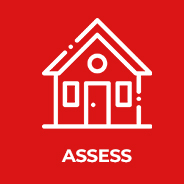Managing smoke and its impact on the community
Hazard reduction is an important tool in protecting communities from the threat of fire.
The NSW Government is committed to carrying out hazard reduction burning, while balancing the potential impacts of smoke on the community.
An interagency committee has been formed to better manage smoke impacts on human health and the environment from hazard reduction burns. The Smoke Management Steering Committee consists of representatives from:
- Department of Planning, Industry and Environment (Science, Economics and Insights)
- NSW Rural Fire Service
- Department of Planning, Industry and Environment (National Parks and Wildlife Service)
- Fire and Rescue NSW
- Forestry Corporation NSW
- NSW Environment Protection Authority
- NSW Health
- Bureau of Meteorology
The committee has established protocols around assessing the likely impact of smoke on communities, actions which may limit the impact of smoke where possible, and how to communicate with members of the community about preventative action to reduce the effects of smoke.
|
|
|
While there is a role for Government and agencies in evaluating, limiting and communicating the impact of smoke, members of the community also have a role in understanding the effects of smoke and taking preventative action where possible.
There is a range of ways that you can monitor the potential for smoke in your area, including:
- NSW RFS Hazard Reduction Advisory
- NSW RFS Fires Near Me website and through the Fires Near Me NSW Smartphone application
- DPIE Air quality monitoring and forecasts - http://www.environment.nsw.gov.au/aqms/aqi.htm
- NSW Health bush fire smoke and health
- Bureau of Meteorology NSW forecasts






